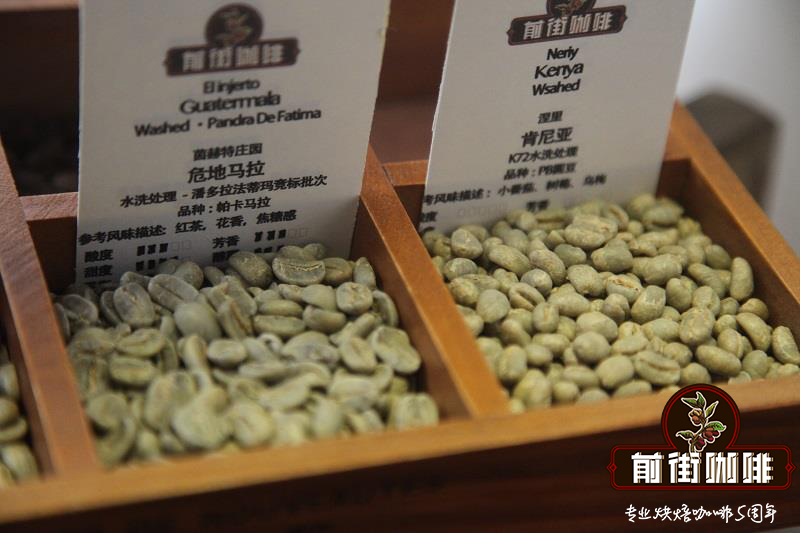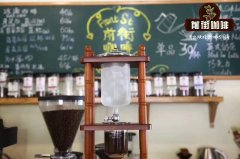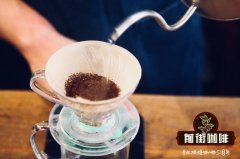Coffee is classified like this. Explore the secret and classification of coffee bean names.

Professional coffee knowledge exchange more coffee bean information please follow the coffee workshop (Wechat official account cafe_style)
When buying coffee beans, in addition to the name of the coffee origin in the package or in the introduction, sometimes you will see the English and numbers, G1, G2, G3, AA, PB, SHB, SHG, HB and so on. Have you ever wondered what these English or numbers stand for? What's the difference between them?
In order to distinguish between good quality coffee beans and poor quality coffee beans, we have to grade the coffee.
Coffee grading is usually carried out according to defect rate, bean size, altitude, raw bean density, treatment standards, etc., but because each country's historical background, trade interests, climate, topography and other factors are different, we cannot use the same standard to calculate defects, or simply to compare heroes in terms of altitude, nor can we compare one country with another. These are all mistakes rather than objective direct comparisons.
Therefore, in more cases, it is a combination of a variety of standards for description, and in order to really understand these English and figures, we have to understand the classification and classification of coffee.
Classification and Classification of Coffee
In different countries, there will be their own accustomed way of grading. But basically, the most commonly used grading criteria are as follows:
1. Differences in the appearance of raw beans, such as size, shape, defect ratio.
two。 The environment in which raw beans grow and their effects, such as altitude and hardness.
3. After baking, it is judged by the quality of the cup.
As a result, coffee beans are graded according to some key points before they are processed for export:
① according to the proportion of defective beans
② by legume size
③ altitude and hardness
Quality test by ④ cup
Proportion of defective beans in ①
The less the proportion of defective beans, the higher the grade of beans, generally speaking, the producing area and the store will pick beans according to the condition of the beans. (voice of riddle: picking out defective beans is a very time-consuming and time-consuming thing.)
For example, raw beans in Ethiopia are G1--G5, G1 and G2 are washing grades, G3 and G4 are sun grades, and general commercial beans are G4. (in recent years, the preferred grades of many Ethiopian sun-dried beans are also marked with G1 and G2. )
Jiayushan Mantenin grade is G1, natural shade planted high-quality Arabica beans, washing treatment.
Classification according to defect rate
American standard USP US preparation, European standard EP Euro preparation, extreme standard GP Gourmet preparation many countries have USP, EP and GP standards, USP\ EP is relatively more common. European and American standards are based on the specific requirements for the defects or items of raw beans, and sometimes there are other standards among them, which are not detailed because different national standards are different. Generally speaking, the EP standard is higher than the USP standard.
The editor, who is picking beans, said: "trash, come forward!"
② by legume size
That is, the length and width of the bean body (size), Colombia to "bean size is beauty" as the purpose, classification to the unit, more than 18 mesh (about 0.7cm) for Supremo, the following is Excelso. (item represents the diameter of the coffee bean, one item is 1x64 inch, 1 inch = 25.4mm)
Kenya's grading is based mainly on the size of beans, supplemented by cup quality and bean weight. So we often hear about Kenya AA, the highest quality grade is AA PLUS (AA+), followed by AA, AB (15Murray 16 items, accounting for most of the production). Wait. In addition, there is PB, which means Peaberry, which is classified by appearance.
A sieve used to determine the size of beans.
Columbia grade Excelso, bright and balanced, thick taste with nutty and citrus aromas, naturally shaded high-quality Arabica beans, washed.
③ altitude and hardness
A producing country in Central and South America except Brazil and Colombia. For example:
Grade
Altitude
Mark
one
1350Mutual 1500m
SHB (Strictly Hard Bean) extremely hard bean
two
1200Mutual 1350m
HB (Hard Bean) hard bean
It is also divided into SHG (Strictly High Grown), SG (High Grown) and SC (Central Standard) according to altitude. Basically, the higher the altitude of coffee trees, the harder the coffee beans will be. this is because low temperature, short sunshine, high humidity and other factors will make coffee grow more slowly, grow fruits with higher density, and the flavor of coffee beans, such as acidity and sweetness, will be more saturated. In short, the altitude has a great influence on the quality of coffee beans.
Ecological green Honduras grade is SHG (Strictly High Grown), the flavor balance is soft, the flower smell is melodious, the natural shade grows the high quality Arabica bean, the water washing method treatment.
Quality test by ④ cup
Although Brazil is one of the largest coffee producing countries in the world, among the coffee producing countries in Central and South America, Brazil's production altitude is on the low side, and its landform is flat, less shaded trees, and lack of micro-climate, so the coffee beans produced are soft, commonly known as soft beans, and taste smoother than other producing areas. So Brazil uses five grades to rate it:
1. Strictly Soft is extremely meek.
2. Soft compliant
3. Softish is a little softer.
4. Hardish is not catchy.
5. Rioy smells of iodine choking.
Smart Brazilians use taste for grading. The Brazilian Coffee Excellence Competition, Cup of Excellence, which has been held since 1999, uses the mild and smooth low acidity, mellow thickness and sweetness of Brazilian coffee, as well as the overall presentation of nutty and cocoa flavors, as the basis for coffee evaluation. "the sweetness, purity and smooth finish of the entrance" has become a representative feature of Brazilian high-quality coffee. This flavor also explains why Brazilian beans often play an indispensable role in special bean recipes.
In short, grading is an important consideration when we choose coffee beans; of course, raw coffee beans must be well preserved so that coffee farmers in the producing areas do not waste their hard work in planting and screening, and finally go through changes in roasting and brewing that vary from person to person. there will be millions of changes in the taste of coffee.
Important Notice :
前街咖啡 FrontStreet Coffee has moved to new addredd:
FrontStreet Coffee Address: 315,Donghua East Road,GuangZhou
Tel:020 38364473
- Prev

Coffee bean species and classification rules A complete collection of coffee names in 66 countries and regions around the world
Professional coffee knowledge exchange more coffee bean information Please pay attention to Coffee Workshop (Wechat official account cafe_style) Coffee beans are grown in about 66 countries around the world, of which Arabica, Robusta and Liberica can be classified. Arabica is the largest major variety of coffee beans, accounting for about 80% of its aroma and quality. And Robusta
- Next

An introduction to the types and characteristics of Coffee in Coffee Shop
Professional coffee knowledge exchange more coffee bean information please follow the coffee workshop (Wechat official account cafe_style) Australia's streets are full of coffee shops, come to Australia to taste a cup or two of coffee. There are many kinds of coffee. Let's get to know coffee through the following short video. How to order coffee in Australia? In Australia, there are many kinds of coffee. For example
Related
- Detailed explanation of Jadeite planting Land in Panamanian Jadeite Manor introduction to the grading system of Jadeite competitive bidding, Red bid, Green bid and Rose Summer
- Story of Coffee planting in Brenka region of Costa Rica Stonehenge Manor anaerobic heavy honey treatment of flavor mouth
- What's on the barrel of Blue Mountain Coffee beans?
- Can American coffee also pull flowers? How to use hot American style to pull out a good-looking pattern?
- Can you make a cold extract with coffee beans? What is the right proportion for cold-extracted coffee formula?
- Indonesian PWN Gold Mandrine Coffee Origin Features Flavor How to Chong? Mandolin coffee is American.
- A brief introduction to the flavor characteristics of Brazilian yellow bourbon coffee beans
- What is the effect of different water quality on the flavor of cold-extracted coffee? What kind of water is best for brewing coffee?
- Why do you think of Rose Summer whenever you mention Panamanian coffee?
- Introduction to the characteristics of authentic blue mountain coffee bean producing areas? What is the CIB Coffee Authority in Jamaica?

